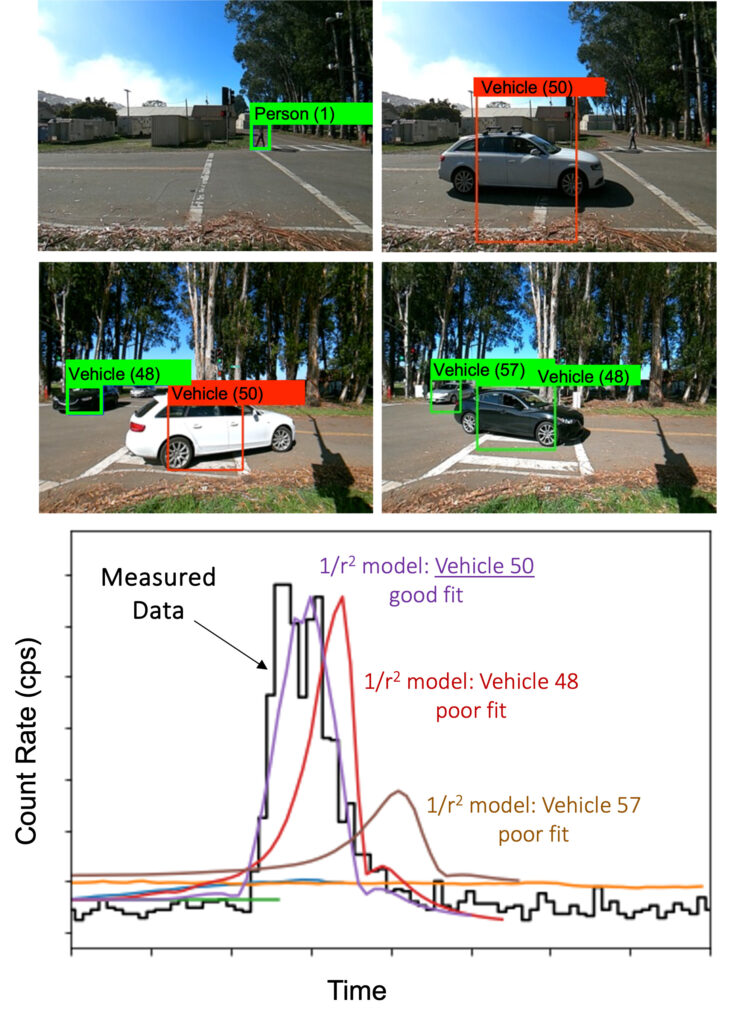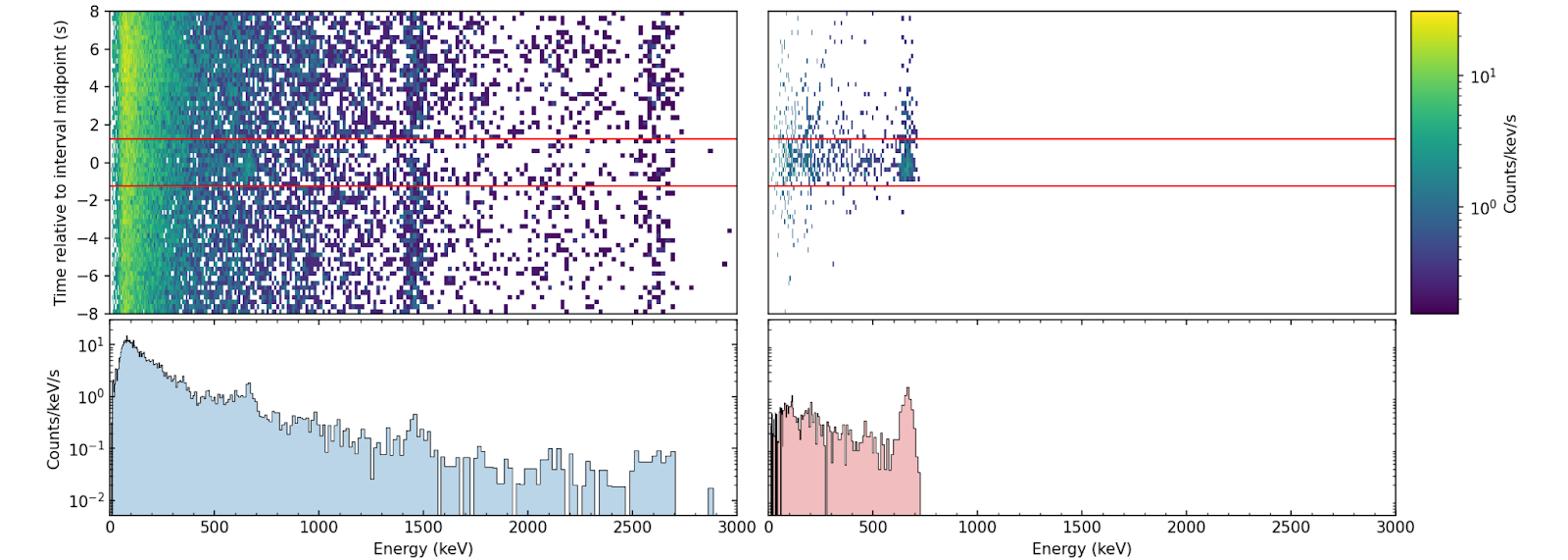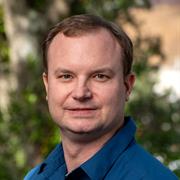The rapid detection and identification of radiological anomalies from illicit radioactive materials is crucial for nuclear safety and security.

The attribution of anomalous gamma-ray count rates to passing vehicles using object detection and tracking. The LBL approach is able to correctly find which of several vehicles best matches the given signature.
This task hinges on the development and application of cutting-edge algorithms that can analyze signatures from various types of radiation detectors and distinguish relevant signals from the typically large and highly varying radiological backgrounds encountered in real-world environments. By combining these detectors with advanced, non-radiological “contextual” sensors like cameras and LiDAR, and leveraging ever-increasing computational power, a new generation of algorithms is now emerging to revolutionize anomaly detection and isotope identification capabilities.

All gamma-ray events detected by a simulated mobile system (left) versus only those coming from a Cs-137 source (right). An algorithm will examine either the spectrum (bottom) or waterfall (top) to determine whether an anomaly is present.
The Applied Nuclear Physics program is engaged across a variety of fronts in taking advantage of the latest in computational methods and sensor technologies to improve our ability to detect weak radiological/nuclear signatures in complex environments.
Key research activities in this area include:
- The development and application of advanced algorithms, including ML methods, for anomaly detection and isotope identification
- Non-negative Matrix Factorization
- Neural Networks
- Online learning methods
- Creating and maintaining a repository of experimental and simulated data with which to benchmark and characterize advanced detection algorithms
- Exploring the fusion of data from non-radiological sensors such as video and LiDAR to enhance anomaly detection and source localization
- Performing meta-analyses and algorithm ‘introspection’ to understand the performance of advanced algorithms
